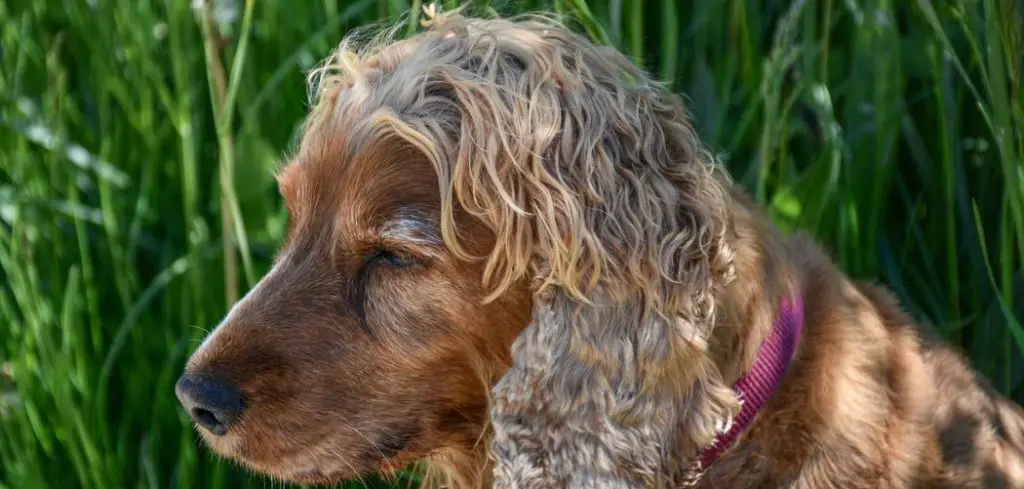When a dog has yellow mucus in their stool and is also throwing up, it is a worrying combination of digestive symptoms. Both issues point to illness in the gastrointestinal system and should not be ignored.
We outline the possible causes of yellow mucus in a dog’s poop and vomiting, what you can do at home, and when to seek veterinary help.
Yellow Mucus in Dog Poop and Throwing Up — Why It Happens
Yellow mucus in stool paired with vomiting usually signals digestive tract inflammation or infection. This may result from dietary issues like food intolerance or eating something inappropriate, infections such as parasites or bacteria, or more serious conditions like pancreatitis and liver disease.
Stress and sudden diet changes can also disrupt digestion, leading to mucus in stool and vomiting.
Because several underlying problems could be involved, attention and timely care are important.

Yellow Mucus in Dog Poop and Throwing Up: Common Causes
Dietary Indiscretion
Dogs often eat things they shouldn’t — from garbage to table scraps. When this happens, their stomach and intestines can become irritated, leading to vomiting and mucus-filled stools.
The yellow color often comes from bile, which enters the stool when digestion is upset.
In mild cases, dogs may recover quickly, but if vomiting continues or stool remains abnormal, it points to more serious irritation or infection.
Read more: Mucus in Dog Poop and Vomiting (What it means)
Food Intolerance or Allergy
If a dog has trouble digesting certain ingredients, such as chicken, beef, wheat, or dairy, the immune system may react and cause inflammation in the digestive tract.
This inflammation produces mucus in the stool. At the same time, vomiting may occur after eating offending foods.
Chronic issues with diarrhea, mucus, and vomiting can often be traced to underlying dietary sensitivities that require a long-term change in food.
Parasitic Infections
Intestinal parasites such as Giardia, roundworms, or whipworms can damage the gut lining, triggering both mucus production and vomiting.
Giardia infections often cause soft, yellow, or mucusy stools, and vomiting can occur as the parasite irritates the digestive system.
Puppies and dogs with weakened immune systems are especially vulnerable, and these infections can worsen if untreated.
Bacterial or Viral Infections
Gastrointestinal infections caused by bacteria like Salmonella or viruses such as parvovirus can result in both vomiting and abnormal stools.
The mucus in stool is produced as the body tries to protect and flush out the irritant.
Yellow coloring may indicate bile passing quickly through the system due to inflammation.
These cases are often accompanied by fever, lethargy, or loss of appetite, making immediate veterinary care critical.
Pancreatitis
Pancreatitis occurs when the pancreas becomes inflamed, often due to eating fatty foods. This condition disrupts digestion, leading to vomiting and diarrhea that may contain yellow mucus.
Dogs with pancreatitis may also appear lethargic, have abdominal pain, and show a lack of appetite.
Because pancreatitis can progress quickly and become life-threatening, this cause is one of the most concerning.
Liver or Gallbladder Issues
Liver disease or gallbladder dysfunction can interfere with bile production and release.
Since bile is yellow, disruptions often show up as yellow mucus in stool and vomiting of yellow fluid.
These conditions are more common in older dogs and may be accompanied by jaundice, weight loss, or changes in appetite. This makes veterinary evaluation crucial if liver-related problems are suspected.
What to Do If Your Dog Has Yellow Mucus in Poop and Is Throwing Up
If your dog is otherwise bright and alert, you can start by withholding food for 12 hours to allow the digestive system to rest, while still offering small amounts of water to prevent dehydration.
After the rest period, a bland diet such as boiled chicken and plain rice can help settle the stomach.
Monitor your dog’s stools closely. If mucus and vomiting persist beyond a day, it’s important to call a veterinarian.
Parasites and infections need specific treatment, while food intolerances may require a carefully planned diet change.
Keeping your dog hydrated is essential, as vomiting and diarrhea can quickly cause fluid loss.
Never give human medications without veterinary guidance, as many can worsen symptoms in dogs.
Instead, provide a calm environment and avoid treats, table scraps, or sudden food changes until the digestive upset resolves.
When to Call or Visit Your Vet
If your dog continues vomiting after 24 hours or if diarrhea with yellow mucus does not improve, professional care is needed. Immediate attention is also required if vomiting is frequent, forceful, or accompanied by blood.
Other red flags include loss of appetite, severe lethargy, abdominal pain, bloated stomach, or signs of dehydration such as dry gums and sunken eyes.
Puppies, senior dogs, and dogs with pre-existing health conditions should be seen by a veterinarian sooner, as they are at higher risk of complications.
If you suspect pancreatitis, liver disease, or a serious infection, do not wait — these conditions can become emergencies quickly. Early treatment improves recovery chances and prevents long-term damage.
Read more: Mucus in Dog Poop and Diarrhea (Causes and care tips)
Key Takeaway
Yellow mucus in dog poop combined with vomiting often points to irritation or illness within the digestive system.
While minor cases may resolve with rest and a bland diet, persistent or severe symptoms should not be overlooked.
The best approach is to monitor closely, provide supportive care at home, and seek veterinary attention if symptoms continue or worsen. Acting promptly ensures your dog receives the right treatment and avoids serious complications.
